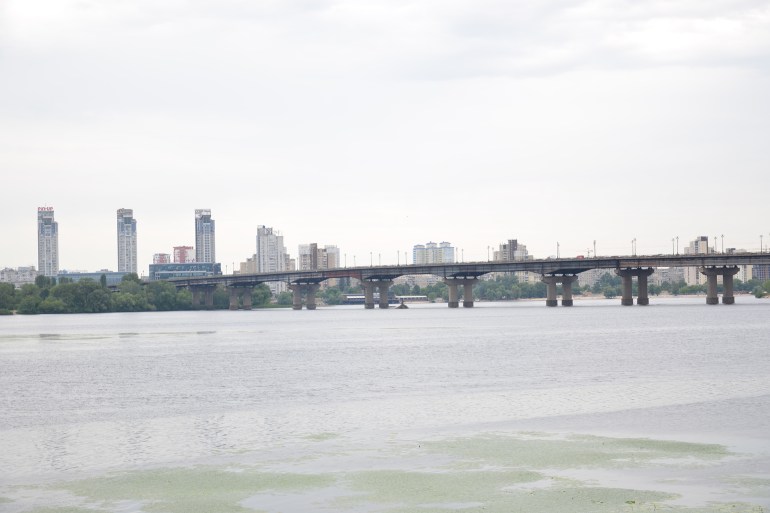KIEV - Residents of the Ukrainian capital ( Kiev
) breathed a sigh of relief after announcing the reopening of all major bridges to vehicular traffic between the two banks of the city on the Dnieper River.
The Ukrainians, through the communication sites, expressed their happiness with the matter that shortened the time and long daily distances in front of them, and some considered it "the biggest indication of the return of life to normal in the city", after the withdrawal of the Russian forces at the end of last March.
The eastern and western banks, or the right and left as they are called locally according to the course of the Dnieper River, are connected by a number of huge bridges, the most prominent of which are: the South Bridge, the Dniprovsky Bridge, the Batona Bridge, the metro bridge that cars and metro cars cross together, the northern bridge or the Moscow Bridge before Renamed a while ago.
Serhi, a resident of the left bank, told Al Jazeera Net, "I used to take at least 30 km more than usual daily to reach the city center and return, and this is a lot, expensive and tiring in light of the fuel shortage crisis, or about half an hour more through bypass transportation as well."
"It's great that things are gradually getting back to normal. I think this will encourage a lot of city residents to come back from the areas of displacement, especially those who live in the left bank," he added.
Batona Bridge is one of the last bridges to be reopened to vehicular traffic in Kyiv (the island)
Between closing, mining and detonation
The last bridges that were inaugurated are the "Metro" and Batona bridges, which are the closest to the main seat of government in the country, as they are only a few kilometers away from a plateau overlooking them, which includes the presidential building, parliament and the Council of Ministers.
The residents of the capital remember well how the authorities rushed in the first hours of the war to close these two bridges, and tighten security measures and inspections on other bridges.
They also remember well how the army mined some bridges to blow them up in front of or under the Russian forces if they advanced, so that the displaced in the first days of the war used to see those mines with their eyes on the bridges of twisty roads, because the army deliberately destroyed bridges on other main roads that lead to Kyiv.
The Ukrainians destroyed the Stoyanka bridge on the road from Kyiv to Zhytomyr in the west to prevent the advance of the Russians (Al-Jazeera)
Protecting the city and the headquarters of government
These measures led to the protection of the city and the headquarters of the government, and confined the battlefield to the suburbs, preventing the arrival of large groups of Russians to the interior.
Serhiy Sakalov, one of the officials in charge of the "regional defense" forces affiliated with the army, said - to Al-Jazeera Net - that the destruction of the bridges "hampered the progress of the Russian forces, and confined them under the strikes of our forces, in the northeastern and northwestern suburbs of the capital."
He added that Kyiv is fortified by many dense forests around it, and since it is surrounded by many valleys and branch rivers as well, there is no way to it except that it includes several bridges that have been closed or destroyed, which made the task of the Russians almost impossible.
He stressed that Kyiv's bridges protected the city and the regime, and prompted the Russians to re-calculate and withdraw.
Among the most important bridges destroyed by the Ukrainians with the start of the war is a bridge linking Kyiv to the city of Bucha at its entrance, another linking it to the city of Irbin, and the "Stoyanka" bridge on the highway leading to the city of Zhytomyr in the west.
A metro bridge in Kyiv is one of the bridges that the authorities rushed to close at the beginning of the war (Al-Jazeera)
Bridge structures protected us
In the northwestern suburbs, talking to some residents about the bridges makes you feel that they have a special appreciation for the role they played, even in their protection.
Ihor, a resident of the city of Irbin, told - to Al-Jazeera Net - that during the evacuation stage, "hundreds of people were sheltering in what was left of these destroyed bridges, because they were no longer a target, and under their roof we were together seeking safety that suddenly disappeared from our homes."
He adds, "I remember well those days every time I passed the bypass road around the bridge, and the completion of the repair in my opinion is an indication that life has returned to the way it was in Irbin."

